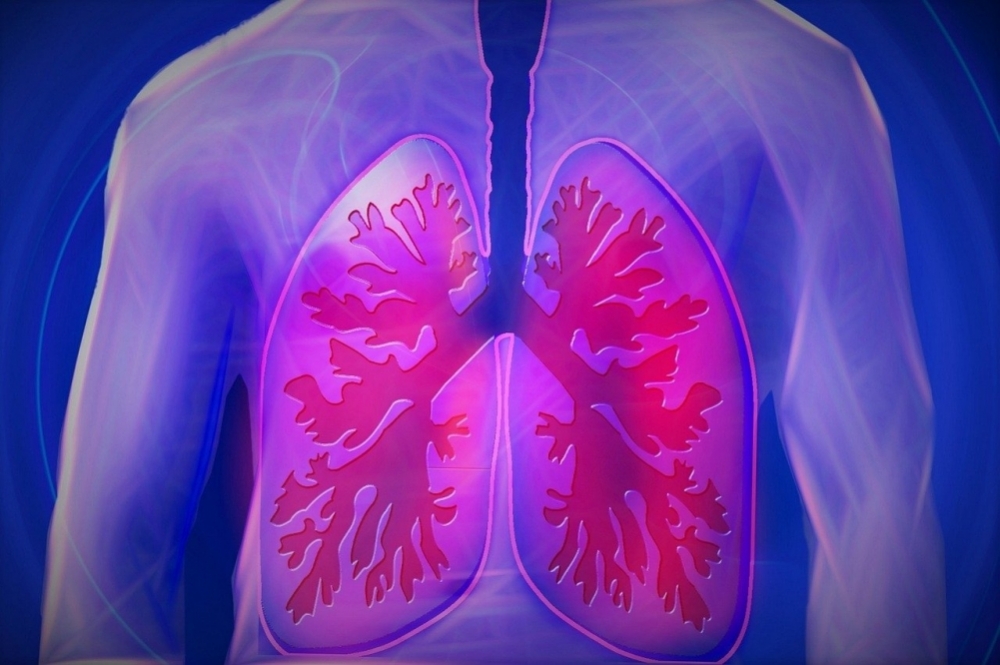


Researchers at the University of Campinas in Brazil reveal the mechanisms whereby SARS-CoV-2 disrupts the regulation of inflammation, coagulation and blood pressure when it infects alveolar cells, responsible for gas exchange in the lungs (image: Pixabay)
Published on 05/05/2021
By José Tadeu Arantes | Agência FAPESP – The first integrated atlas of human lung cells has been constructed at the University of Campinas’s School of Medical Sciences (FCM-UNICAMP) in the state of São Paulo, Brazil, using some 130,000 public single-cell transcriptomes. Thanks to the atlas, researchers there have found that an alveolar cell subtype is one of the main targets of SARS-CoV-2. The alveoli are where the lungs and blood exchange oxygen and carbon dioxide during the process of breathing in and out.
The researchers also showed that proteins from the inflammation, coagulation and blood pressure control systems are present in this same subpopulation of lung cells.
“The study is the first to demonstrate that this same lung cell subpopulation that expresses large amounts of the protein used by SARS-CoV-2 as its cell entry receptor [ACE-2] also expresses large amounts of proteins that regulate inflammation, coagulation, and blood pressure. This may explain why the virus is able to cause damage to all these systems simultaneously and represents such a threat to the lives of those infected,” said Licio Augusto Velloso, principal investigator for the study. Velloso is a professor at FCM-UNICAMP and leads the Obesity and Comorbidities Research Center (OCRC), a Research, Innovation and Dissemination Center (RIDC) funded by FAPESP.
The study was conducted as part of the PhD research of Davi Sidarta de Oliveira, whose thesis advisor is Velloso. The findings are reported in Scientific Reports, an online open-access journal owned by Springer Nature.
To understand the significance of these findings, it will be useful to recall how SARS-CoV-2, the virus that causes COVID-19, infects human cells. “This virus enters human cells using as its receptor a protein called ACE-2, which is present in several organs, such as lungs, kidneys and intestines. Its functions include regulating three systems that play a key role in the maintenance of life: the cardiovascular, immune and blood coagulation systems,” Velloso explained.
Studies published early in the pandemic showed that the viral envelope is covered with some two dozen spikes resembling a crown (as are all coronaviruses – hence the family name). Each spike is in fact a protein, and it is this protein that binds to ACE-2 so that the virus can enter the host cell.
When the virus docks with ACE-2, it can interfere with the protein’s proper functioning. “Because of this protein’s importance to the regulation of inflammation [in the immune system], blood pressure [in the cardiovascular system] and clotting, we suspected that not only viral entry into human cells causing functional damage and cell death but also the virus’s physical link with ACE-2 might explain severe cases of the disease in which the patient’s lungs become very inflamed, and this is accompanied by blood clots and cardiovascular alterations,” Velloso said.
ACE-2 is known to be abundant in the lung but scientists so far lack details of which cells contain significant amounts of the protein, as there are more than 40 different types of pulmonary cell. “Knowing which cells have the most ACE-2 could help us understand better how the virus enters and damages the lungs,” Velloso said.
In recent years, scientists have developed a methodology to study in detail all the genes that are expressed (and hence result in the production of proteins) in the different cells of the organism. The method is known as single-cell RNA sequencing. Analyzing the data produced by the sequencing of a large number of cells is highly complex, and requires computational algorithms capable of crunching huge numbers of variables.
“To define which human lung cells express ACE-2 and whether their expression occurs in the same cells that have other proteins involved in regulating inflammation, coagulation, and blood pressure, our group developed a program called dbMAP as part of Oliveira’s doctoral project, and used it to analyze the transcriptomes of some 130,000 human lung cells,” Velloso said.
The team used this method to create the first integrated atlas of human lung cells and to elucidate the entire cascade of effects associated with ACE-2, involving alveoli and the inflammation, coagulation and blood pressure regulation systems. “All this data will assist not just treatment but also prevention of COVID-19,” Velloso said.
He and his group also collaborated on the project with researchers at the Center for Computational Engineering and Sciences (CCES), another RIDC supported by FAPESP and hosted by UNICAMP.
The article “SARS-CoV-2 receptor is co-expressed with elements of the kinin-kallikrein, renin-angiotensin and coagulation systems in alveolar cells” is at: www.nature.com/articles/s41598-020-76488-2.
Source: https://agencia.fapesp.br/35784